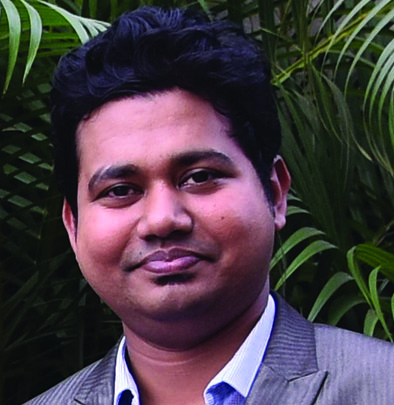Bridging the digital divide by enhancing effective digital finance usage among the poor | Part 1
by Rahul Chatterjee and Shawn Hunter
Jul 30, 2024
4 min
Many low and middle-income (LMI) people are divided in terms of using digital platforms and services. Their journeys differ in terms of their access to, and use of, smartphones to engage in the digital economy due to a range of barriers such as affordability, capability, and confidence. This blog is the first of a three-part series that will showcase the developments of this research project and highlight our findings along the way.
Rubina, a grocery shop owner in rural Munshiganj in Bangladesh, owns a basic feature phone. Her use of the phone is limited to talking to her friends and relatives, sending and receiving text messages, and occasionally using bKash (a mobile financial service) to receive payments or pay suppliers. She cannot use bKash by herself and relies on her husband to use the service for her. She cannot afford a smartphone. However, she sometimes borrows her husband’s smartphone (the only family member to have one) to watch YouTube videos. She does not know how to use social media and messaging apps.
Hafid, a farmer who also runs a photocopy and mobile accessories shop, hails from a semi-urban area of Bandung, Indonesia. He has a smartphone, and he mostly uses it for accessing social media and doing online shopping. The ‘super app’ he uses works for both online shopping and digital payments.
The examples of Rubina and Hafid illustrate how many low and middle-income (LMI) people are divided in terms of using digital platforms and services like WhatsApp/Telegram-based messaging, social media, YouTube videos, digital payments, online shopping, etc. Hafid’s experience is representative of being in a far more advanced stage of the ‘digital journey’ compared to Rubina. Their journeys differ in terms of their access to, and use of, smartphones to engage in the digital economy due to a range of barriers such as affordability, capability, and confidence.
This digital divide is real and growing. Its impact is particularly evident in the realm of financial services where the role of digital technology has been increasingly promoted as a game changer for achieving greater financial inclusion. However, despite the high levels of investment and promotion towards the adoption and effective usage of digital financial services, bridging the digital divide remains a persistent challenge.
Many factors lead to the digital divide―the status of infrastructure, cost and accessibility of smartphones, lack of education, lack of financial and digital literacy, poor User Interface/User Experience (UI/UX, regulatory challenges, and commercial driver―as very clearly articulated in this article. But there is a behavioral angle to it as well. In multiple markets in the global south, we have seen that the LMI people still prefer personal interaction rather than digital mode―there is still a lack of trust in technology and a lack of confidence to use technology (especially in the case of digital payments), and a lack of value proposition that digital financial services (DFS) offer, especially in cash-heavy economies. The same is true for using digital platforms to grow businesses. This results in poor digital skills and a broadened digital divide.
It is important to remember that achieving financial inclusion isn’t just about innovative technology, investments, or infrastructure. It’s also about changing behaviors, building trust, and working with communities. As digital transformation continues to change the financial inclusion landscape, it brings with it several important questions―how is the digital divide impacting those at the bottom of the economic pyramid (BoEP) and how can effective support mechanisms drive technology adoption and effective usage? What can be considered as the best practices to drive DFS? Is there a single factor or combination of factors the cause hindering the adoption of DFS among poor non-users? And what roles do the diverse circumstances of individuals and their communities play in it?
This is the focus of a major new research program being conducted by the Griffith Asia Institute in partnership with the Asian Development Bank Institute (ADBI) and MSC (MicroSave Consulting). Made possible through funding support from the Citi Foundation, this program examines how the digital divide impacts the poor in developing countries and identifies practical support mechanisms that can drive technology adoption and effective usage. Through the use of surveys, diaries, and a randomised controlled trial (RCT), the findings will have significant implications for developing policies to promote financial inclusion.
To understand the practical support mechanisms better, data is being collected from low-income individuals in Indonesia and Bangladesh about their usage and attitudes towards DFS. In particular, the RCT will examine the effect of various instruction and support mechanisms on the adoption of digital payments by owners of micro- and small enterprises. Based on these findings, solutions will be designed and tested with the aim of supporting individuals to develop their digital skills and build confidence in their ability to use DFS.
This study will help policymakers and practitioners better understand the digital divide and what practical approaches can be used to ensure that, as new technology continues to develop and evolve, it can provide solutions that benefit all members of society, including the poor and vulnerable.
This blog is the first of a three-part series that will showcase the developments of this research project and highlight our findings along the way.
The article was first published on the Griffith University website on 6th November 2023.
 by
by  Jul 30, 2024
Jul 30, 2024 4 min
4 min

Leave comments